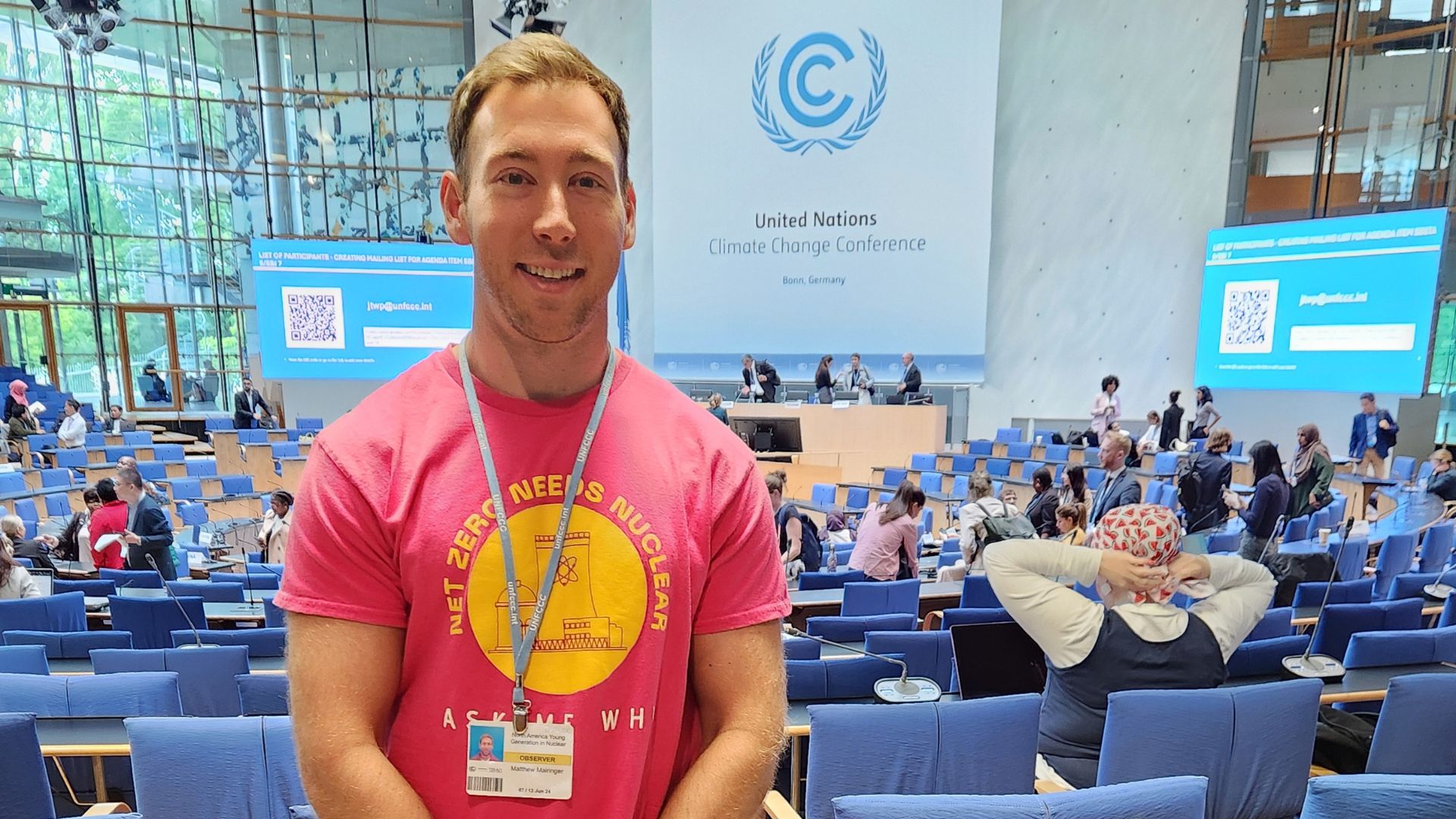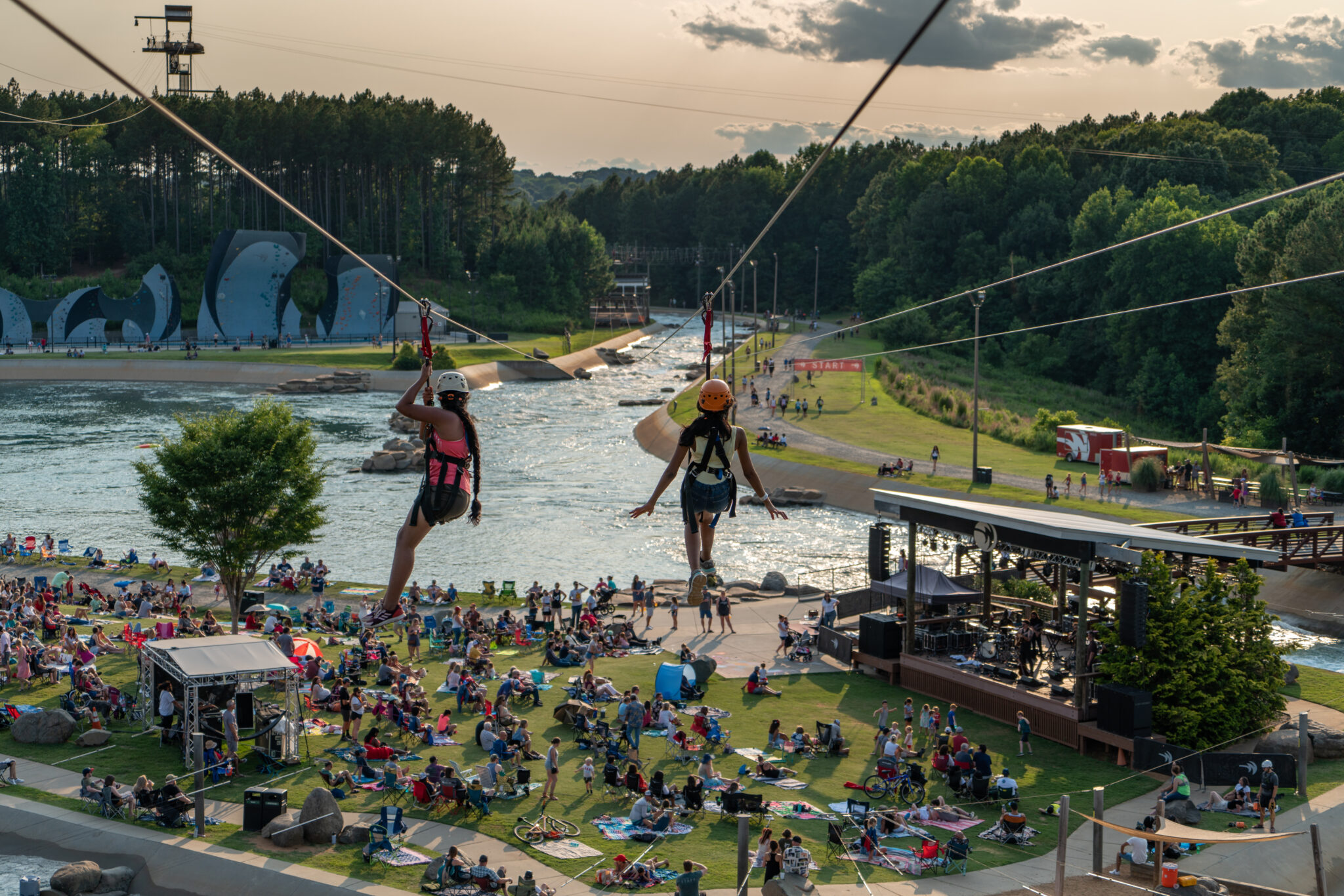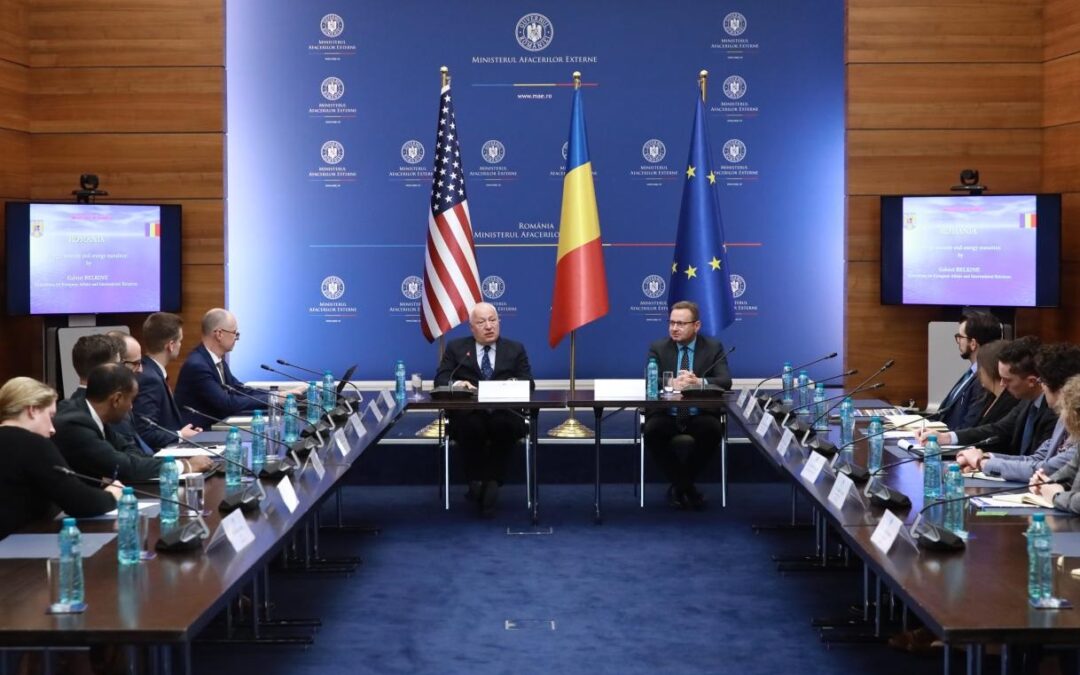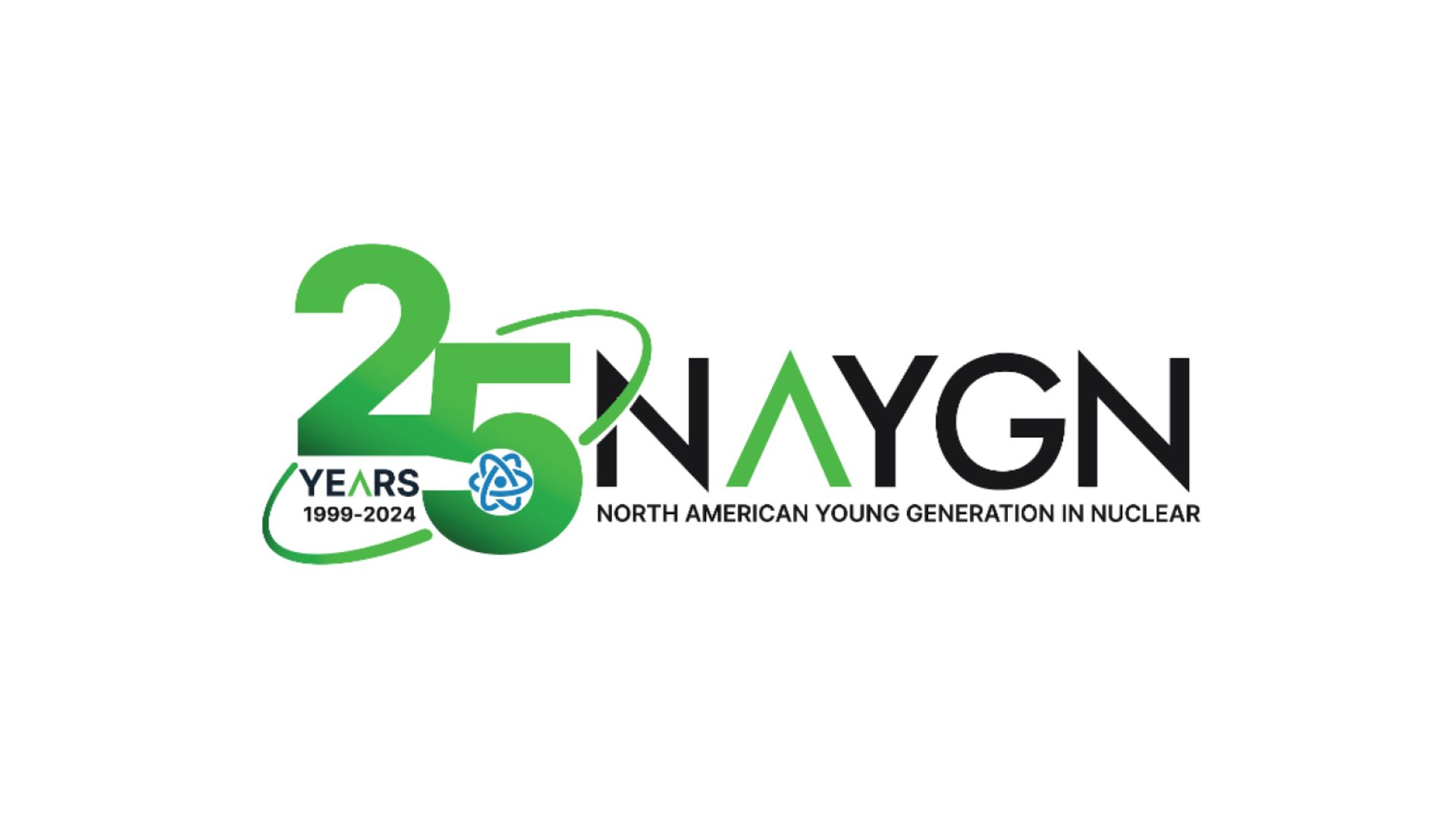NAYGN and the JAIF Conference
Konnichiwa (hello), I had the privilege of being invited to be a plenary speaker at the 55th Japan Atomic Industrial Forum (JAIF) Annual Conference, titled “Global Sustainable Development and Expectations for Nuclear Energy” April 12-14, 2022. Japan has been closed to tourists for over two years – and only at the start of March were business visa visitors allowed to enter without having to quarantine (if triple vaccinated and from a country recognized as having COVID under control). This conference had speakers from OECD NEA, IAEA, JAIF, METI, IEA, TerraPower, DOE, Romania, Poland, France, BEIS, JEMA, TEPCO, NSRA, JNFL, Orano, universities, Africa4Nuclear, and I was speaking on behalf of NAYGN – so the topics were both broad and international in perspective. The conference was also unique as it had ~250 people in person with ~400 tuning in virtually – with a combination of some presentations virtually and some in person. In my session “Future of Nuclear Power in the Eyes of Young Generation” I provided an update on the nuclear situation in Canada and during the panel discussion I gave information on what we are doing at NAYGN to engage the young generation and to educate and advocate for nuclear in North America. This is a timely discussion as Japan needs to import about 90% of its energy requirements – and has only 10 reactors online. There are 7 reactors which have passed the Nuclear Regulation Authority (NRA) review, 10 reactors under NRA review, 9 reactors which have not yet applied, and 24 reactors undergoing decommissioning. Japan is also in the process of building the Rokkasho Reprocessing plant – the first commercial reprocessing plant the country has, and this is expected to be operational late 2022. Given the past events at Fukushima Daiichi there is public concern regarding nuclear and this is where sharing lessons learned from NAYGN – going to schools with NAYGN nuclear children’s books, the NAYGN drawing/essay contests, public rallies, social media, and other education tools – are directly relevant to Japan.
Plenary Session #5 - Future of Nuclear Power in the Eyes of Young Generation (Tokyo, Japan)
Tour of Fukushima Daiichi:
At the close of the conference Princess Mthombeni (founder – Africa4Nuclear) and I were provided with a technical tour of the Fukushima Daiichi plant, organized by JAIF. Getting to Fukushima Daiichi was different than I expected. Going from Tokyo we boarded a Japan Rail train and exited at the Tomioka Station – which is just a couple kilometers away from the Fukushima Daini station and about 10 kilometers away from the Fukushima Daiichi station. When we were just a few kilometers from the station I could start to see the remediation efforts – excavators turning the soil and also working on the berms. The towns we passed in the train looked like lively, normal cities do – cars were parked and people were going about their normal day, and the cherry blossoms were in full bloom. Even in Tomioka there were no radiation signs, no warnings. There were shopping plazas, convenience stories, and everything you’d expect in a normal town. As the decontamination efforts move forward more and more areas have been re-opened for residents to move back in.
Excavators working in the area south of the Tomioka station
In Tomioka there is also the TEPCO Decommissioning Archive Center and that was where we headed to from the station. The Decommissioning centre has two floors with a wealth of information – from the basics of how nuclear fission and the reactors work to interviews with personnel present during the disaster to updated information on the decommissioning progress. The main video you watch starts directly with an apology from TEPCO and then continues with their commitment to remediate the site. This centre is open to the public and has many TEPCO staff on hand to answer questions – the displays have videos in both English and Japanese.
TEPCO Decommissioning Centre
Bus Tour with Guide and Dose Rate Monitor
Dose Rate 100m from Reactor Buildings
It is also possible to arrange a bus tour which goes through the nearby towns, and also goes right into the Fukushima Daiichi protected area and includes exiting the bus at an overlook of the reactors – about 100m away from them. You can actually even watch the bus tour video here. The great thing about the tour is the bus includes a dose rate display so you can see the dose rate as the bus drives through the area. What shocked me was just how low the dose rates were – through the nearby site and towns the dose rate was usually under 0.5 microSv/hr. In the protected area itself dose rates were 0.4 microSv/hr and maxed out around 3 microSv/hr. For comparison at the Top of Mt. Fuji or at the Misasa hot spring the dose rate is 0.1 microSv/hr. The exception to this was at the overlook – which had dose rates between 50 – 80 microSv/hr. This makes sense since the unit 1 reactor is still not covered and the fuel debris has not been removed - from the lookout point it is almost eye level with the damaged reactors and thus has a direct streaming pathway with no shielding (which is what the buildings provide in the protected area which is why the dose is so low there). Another fact that I never considered was the sheer amount of people still working at the site in decommissioning – 3000 staff per day!
Unit 1 at Fukushima Daiichi
Unit 2 (left) and unit 3 at Fukushima Daiichi
Unit 1 was permanently shutdown on April 19, 2012. This unit was operating when the earthquake struck, was shutdown via control rods, but had a hydrogen explosion as the core melted without cooling. Before the fuel debris can be removed this unit will need to have a cover constructed. Unit 2 was permanently shutdown on April 19, 2012. This unit was operating when the earthquake struck, was shutdown via control rods, and the hydrogen explosion in unit 1 damaged part of the walls in the reactor building in unit 2 however, which prevented an explosion in this building. This building now has an addition consisting of an access gantry and front chamber to take out the fuel via the south side of the building.
Fukushima Daiichi Unit 1 (left) and unit 2 (right)
Fukushima Daiichi Unit 3
Unit 3 was permanently shutdown on April 19, 2012. This unit was operating when the earthquake struck, was shutdown via control rods, but had a hydrogen explosion as the core melted without cooling. The cylinder building was erected over the unit and all spent fuel has been removed from the spent fuel bay and taken to the outside of the building in February 2021. Unit 4 was permanently shutdown on April 19, 2012. This unit was not operating when the earthquake struck (undergoing regular inspection and had no fuel in the reactor), but the building was damaged by an explosion of hydrogen entering through the ducts from unit 3. All spent fuel has been removed from the building in 2014.
Fukushima Daiichi Unit 4
There has been a ton of press coverage with headlines like “Japan plans to release Fukushima’s wastewater into the ocean” and “Japan’s proposal to discharge more than one million tonnes of contaminated water from the ruined Fukushima Daiichi nuclear power station” so I was eager to learn more about this from the tour. In many articles it makes it sound like the water that passes through the reactor site is simply stored, and then will be released directly into the ocean. The first precaution is that at the site most surfaces have been coated and there are collection points and sub-drains for water that passes through the buildings. There is also an impermeable frozen soil wall surrounding the reactors which is nearly 100 feet deep and blocks the flow of groundwater and prevents its mixing with contaminated water.
Water Collection at Fukushima Daiichi
Water Storage at the Fukushima Daiichi Site
When the water is collected it is not, as the media portrays, simply stored untreated in tanks. The water is treated through a pumping and filtration system which uses a series of chemical reactions to remove 62 radionuclides from the water – this system is called the Advanced Liquid Processing System (ALPS). The system is highly effective at removing all radionuclides except tritium – this is very difficult to remove from water (since tritium is an isotope of hydrogen) and there is currently no technology which can remove the tritium at the low concentrations it is found in at the site. At the Darlington site in Canada we have the tritium removal facility – but this technology is only effective because of the high level of tritium we have in the water, and the concentrations at the Fukushima site are orders of magnitude lower.
Holding the ALPS treated water (note the gloves are a COVID-19 precaution, not for radiation)
The good thing about tritium is its relatively short half life – 12.3 years – which means that some of the original water has already gone through one half life. Because of the removal of radionuclides and the low activity of tritium remaining the dose rates from the water are extremely low. What shocked me is that over the next 30 years TEPCO will discharge the water back into the sea – the discharge will actually be LOWER than the site operating limit was when the site was operational. What this means is that the normally accepted release of radiation from the site will still be used as the limit for the contaminated water – a fascinating feat considering this is the water passing through melted cores! Several reactors have already had the fuel removed from the spent fuel bays and going forward plans are in place to remove the fuel debris. It’s interesting to see the different covers/buildings that were placed on/beside the units – the different designs are based on the space available around the reactor and the extent of external damage to the building.
ALPS treated water close-up
Conclusion:
The Fukushima prefecture is a large area covering 13,784 km2. The Fukushima Daiichi nuclear site is just a small portion of this at 3.5 km2 – and even in the site protected area the dose rates are still lower than other naturally occurring high background areas (i.e. Ramsar, Iran). Decommissioning and decontamination efforts have been ongoing and many people have moved back into the areas around the site. The residents have been through an ordeal and we must educate ourselves and our friends on the basics of radiation and remove the stigma from this site. The area around the site is flourishing with life and is far from a contaminated wasteland – actually nature has flourished with the absence of people. The earthquake and tsunami killed an estimated 20,000 people and 160,000 residents were forced to evacuate from the area. For the second worst nuclear disaster in history we must keep in mind the findings from the United Nations Scientific Committee on the Effects of Atomic Radiation reports which found that there were no deaths attributable to exposure to radiation. Nuclear power is the second largest source of clean energy around the world and is vital to our efforts to combat climate change and the millions of premature deaths from air pollution each year. I’ve attached some further resources below:
Further Resources:
Live site camera: https://www.tepco.co.jp/en/hd/decommission/progress/about/livecamera/index-e.html
Tour through the station: https://www.tepco.co.jp/sp/insidefukushimadaiichi/index-j.html
Photos https://www.tepco.co.jp/decommission/visual/photo/
https://www.tepco.co.jp/decommission/visual/album/
Video overview of current situation: https://www4.tepco.co.jp/en/news/library/archive-e.html?video_uuid=f353d4j1&catid=69631




